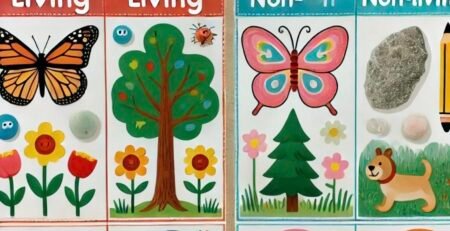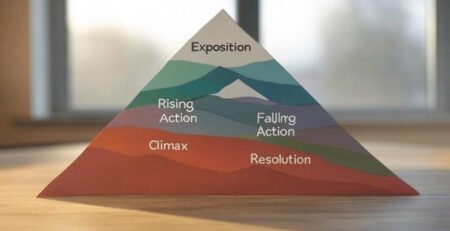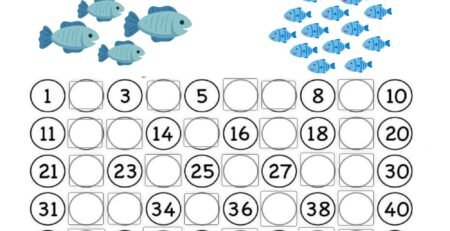04Apr
Lesson Plan > Lesson 33 > English
Elementary Level: Review and Sight Word Games (Review phonics, sight words, and writing)
Mid Level: Review of Quarter Concepts (Grammar games, reading comprehension practice)
High Level: Review and Practice (Grammar Games, Writing Workshops etc)
Elementary Level (Kinder to Grade 2)
Subject: Phonics, Sight Words, and Writing Review
Alignment with Standards:
- CCSS.ELA-LITERACY.RF.1.3.B – Decode regularly spelled one-syllable words.
- CCSS.ELA-LITERACY.RF.1.3.G – Recognize and read grade-appropriate irregularly spelled words (sight words).
- CCSS.ELA-LITERACY.L.1.1.A – Print all upper- and lowercase letters.
- CCSS.ELA-LITERACY.L.1.2.D – Use conventional spelling for words with common spelling patterns.
Lesson Objectives:
By the end of the lesson, the student will be able to:
- Identify and read 10-15 grade-level sight words with accuracy.
- Practice blending and segmenting phonics sounds in simple words.
- Write 3-5 complete sentences using sight words and phonetic spelling.
Materials Needed:
- Sight word flashcards (e.g., the, and, see, like, you, my, is, can, we, go)
- Whiteboard & markers (or paper and pencils)
- Magnetic letters or letter tiles
- Printable sight word bingo sheets (optional)
- Phonics word list (e.g., cat, dog, sun, pig, hat)
- Image Prompt (A colorful picture of a park scene with kids playing—used for a writing activity)
Lesson Activities:
1. Warm-Up: Phonics Review (10 min)
- Activity: “Sound Stretching”
- Say a CVC (consonant-vowel-consonant) word (e.g., dog).
- Have the student stretch the sounds: /d/ – /o/ – /g/, then blend: dog.
- Repeat with 5-7 words.
- Extension: Use magnetic letters to build and change words (e.g., cat → bat → sat).
2. Sight Word Practice (15 min)
- Game 1: Flashcard Speed Round
- Show sight word flashcards one at a time.
- Student reads the word aloud quickly.
- For incorrect words, practice 3 times before moving on.
- Game 2: Sight Word Hopscotch
- Write sight words in chalk on the ground (or on paper squares indoors).
- Student hops on each word and reads it aloud.
3. Writing Practice (15 min)
- Activity: “Picture Prompt Sentences”
- Show the park scene image prompt (e.g., kids swinging, a dog running).
- Ask: What do you see?
- Student writes 3-5 sentences using sight words (e.g., “I see a dog. The sun is hot. We can play.”).
- Encourage phonetic spelling for new words (e.g., swin for swing).
4. Wrap-Up: Sight Word Bingo (10 min, optional)
- Use a simple 3×3 bingo grid with sight words.
- Call out words randomly; student marks them.
- Celebrate a “Bingo!” win with a sticker or high-five.
Assessment:
- Oral: Can the student read sight words with 80% accuracy?
- Written: Do sentences include correct sight words and phonetic attempts?
- Observational: Does the student blend sounds confidently?
Adaptations:
- For Struggling Learners: Focus on 5 sight words at a time; use tactile tracing (e.g., writing in sand).
- For Advanced Learners: Add challenge words (e.g., because, where) or write a short story.
Mid Level (Grade 3 to 5)
Subject: Review of Quarter Concepts
Alignment with Standards:
- CCSS.ELA-LITERACY.L.4.1 – Demonstrate command of grammar conventions (e.g., parts of speech, verb tenses).
- CCSS.ELA-LITERACY.L.4.2 – Use correct capitalization, punctuation, and spelling.
- CCSS.ELA-LITERACY.RL.4.1 – Refer to text details when answering questions.
- CCSS.ELA-LITERACY.RL.4.2 – Summarize a text’s main idea and details.
Lesson Objectives:
By the end of the lesson, the student will be able to:
- Identify and correctly use nouns, verbs, adjectives, and adverbs in sentences.
- Apply punctuation rules (commas, quotation marks) in writing.
- Read a short passage and answer comprehension questions with evidence.
- Summarize a text’s key points orally or in writing.
Materials Needed:
- Grammar flashcards (parts of speech, punctuation rules)
- Whiteboard & markers (or notebook paper)
- Short reading passage (fiction or nonfiction, ~1 page)
- Highlighters (for text evidence)
- Index cards (for games)
- Image Prompt (A historical scene or a mysterious landscape—used for creative writing)
Lesson Activities:
1. Warm-Up: Grammar Charades (15 min)
- Activity:
- Write nouns, verbs, adjectives, and adverbs on index cards (e.g., dinosaur, sprint, colorful, nervously).
- Student picks a card and acts it out or draws it while the parent/teacher guesses the word and part of speech.
- Extension: Turn it into a timed race—how many can they get in 2 minutes?
2. Punctuation & Sentence Structure Review (15 min)
- Game: “Fix the Sentence”
- Write 5 incorrect sentences on the whiteboard (e.g., “she said lets go to the park”).
- Student corrects errors (capitalization, commas, quotes): She said, “Let’s go to the park.”
- Discuss rules (e.g., commas in compound sentences, dialogue punctuation).
3. Reading Comprehension Practice (20 min)
- Activity: “Detective Reading”
- Provide a short passage (e.g., a folktale or science article).
- Student reads silently, then aloud.
- Questions:
- Literal: What did the character do when ___?
- Inferential: Why do you think ___ happened?
- Critical: What’s the main lesson of the story?
- Student highlights text evidence for answers.
4. Wrap-Up: Creative Writing Sprint (10 min)
- Image Prompt: Show a detailed scene (e.g., an ancient castle or a spaceship cockpit).
- Task: Write a 5-sentence paragraph using:
- At least 2 adjectives
- 1 adverb
- Correct punctuation
- Challenge: Include dialogue with quotation marks.
Assessment:
- Grammar: Accuracy in “Fix the Sentence” and charades.
- Comprehension: Ability to cite text evidence and summarize.
- Writing: Use of conventions and creativity in the sprint.
Adaptations:
- For Struggling Learners: Pre-highlight key text details; reduce sentences to correct.
- For Advanced Learners: Add a peer-teaching component (student explains a grammar rule) or a longer summary.
High Level (Grade 6 to 8)
Subject: Review and Practice
Alignment with Standards:
- CCSS.ELA-LITERACY.L.7.1 – Demonstrate command of grammar (phrases, clauses, modifiers).
- CCSS.ELA-LITERACY.L.7.2 – Use commas, semicolons, and punctuation for clarity.
- CCSS.ELA-LITERACY.W.7.3 – Write narratives with descriptive details.
- CCSS.ELA-LITERACY.RL.7.1 – Cite textual evidence to support analysis.
- CCSS.ELA-LITERACY.RL.7.2 – Determine theme and objective summaries.
Lesson Objectives:
By the end of the lesson, the student will be able to:
- Identify and correct errors in sentence structure (fragments, run-ons, misplaced modifiers).
- Apply advanced punctuation (semicolons, dashes) in writing.
- Analyze a short text for theme and support inferences with evidence.
- Draft a narrative or argumentative paragraph with precise language.
Materials Needed:
- Grammar manipulatives (sentence strips, sticky notes for editing).
- Whiteboard or digital doc (for collaborative editing).
- Short high-interest text (e.g., a suspenseful short story or news article).
- Writing prompts (choice of narrative or argumentative).
- Image Prompt (A dystopian cityscape or a courtroom scene—sparks debate or storytelling).
Lesson Activities:
1. Grammar Review: “Sentence Surgery” (20 min)
- Activity:
- Provide 5 sentences with common errors (e.g., fragments, comma splices, dangling modifiers).
- Student “diagnoses” the issue and “operates” (edits) using manipulatives.
- Example:
- Error: Running down the street, the dog chased the mailman. (Dangling modifier)
- Fix: As I ran down the street, the dog chased the mailman.
- Game Twist: Race against a timer for extra challenge.
2. Writing Workshop: “Punctuation Power-Up” (20 min)
- Focus: Semicolons, dashes, and colons.
- Student revises a bland paragraph by adding:
- 1 semicolon (to join related clauses).
- 1 dash (for emphasis or interruption).
- 1 colon (to introduce a list or quote).
- Example Starter:
The storm was coming we needed supplies food, water, and batteries. - Peer Review Option: If working with a sibling/parent, swap and critique.
- Student revises a bland paragraph by adding:
3. Reading Comprehension: “Text Detective” (20 min)
- Activity:
- Read a short text (e.g., “The Lottery” by Shirley Jackson or a NY Times op-ed).
- Discussion Questions:
- Analysis: How does the author build tension/argument?
- Evidence: Highlight a line that reveals the theme.
- Critical Thinking: Is the ending/claim effective? Why?
- Optional Graphic Organizer: T-chart for “Text Evidence vs. My Inference.”
4. Creative Wrap-Up: “Image Prompt Sprint” (15 min)
- Image Prompt: A dramatic scene (e.g., a lone astronaut receiving a mysterious message).
- Task Choices (student selects one):
- Narrative: Write the next 5 sentences of the story. Focus: Foreshadowing.
- Argument: “Should humans explore space?” Claim + 2 pieces of evidence.
Assessment:
- Grammar: Accuracy in “Sentence Surgery” edits.
- Writing: Use of advanced punctuation and coherence.
- Comprehension: Depth of text analysis and evidence citation.
Adaptations:
- For Struggling Learners: Pre-annotate the text with guiding questions; provide a punctuation cheat sheet.
- For Advanced Learners: Assign a rhetorical analysis (e.g., How does the author use ethos/pathos/logos?).













LEAVE A COMMENT